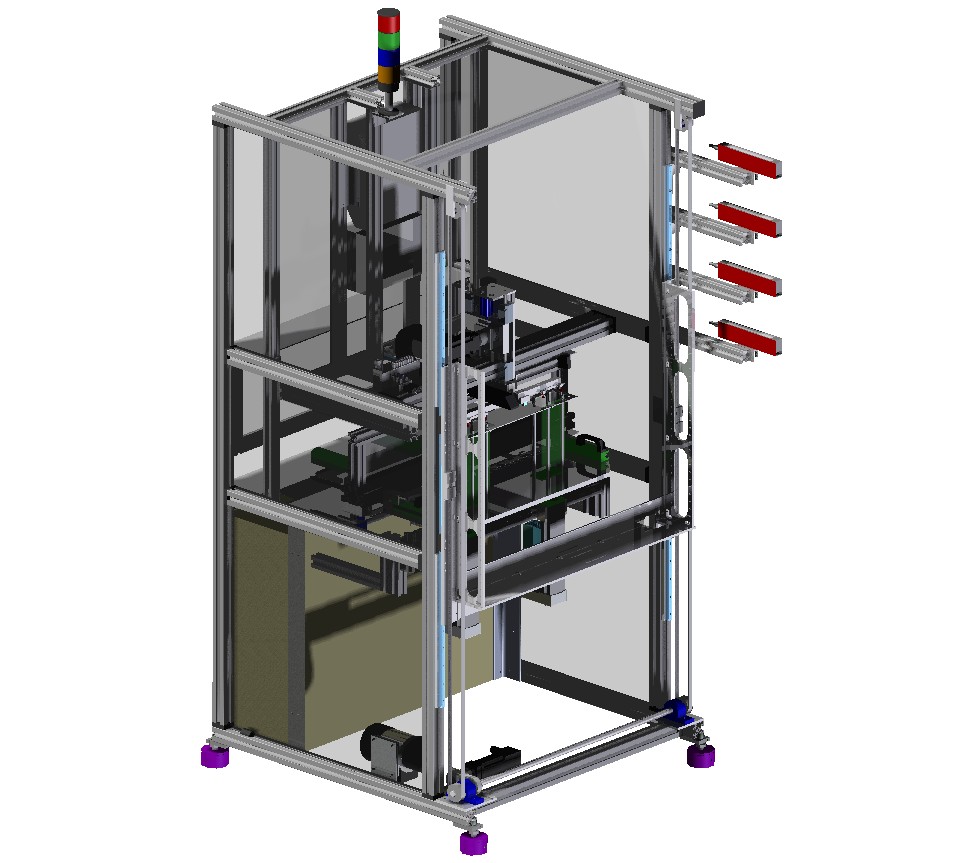| products | download | news | employment | contact |
|
|
|
| products |
| automation |
| robot systems |
| in-mould labelling |
| sir 1013 |
| sir-m 1015 |
| lps 1007 |
| samples |
| projectmanagement |
| consultancy |
The LPS was designed for flexibility. Because of this flexibility (it can be adjusted within 1,5 hours from production with for instance an eight-cavity rectangular lid to a four-cavity round cup) you will be able to accept purchase orders that run much shorter. With the LPS you don't have to amortize the entire automation on just one contract.
Function
The traverse robot picks up the labels for In-Mould Labelling (IML) and places the labels inside of the mould, takes out the finished products and leaves the mould. As the mould closes and the injection moulding machine injects another load of plastic for the next set of products with an IML label, the traverse robot drops the finished products and picks up the next set of labels.
The purpose of the LPS in this production process is to feed and position the labels for the traverse robot. The LPS was designed to be able to handle labels with a wide range of shapes, sizes and quantities (cavities) and is very suited for the production of smaller amounts of different products and/or production with higher cycle times.
The LPS is equipped with a product set, if you wish to use the LPS with another product (and therefore another shape/size label) you will not need a new LPS, only a new product set.
Download
- Datasheet (pdf)
Picture

Technical specifications*
Dimensions
1200mm x 1200mm, hight 2200mm.
Label-area
The horizontal area available for the labels to be placed in is 650mm x 240mm (= max. label-size).
Robot-area
The area available for transferring the labels to the traverse robot is 650mm x 240mm, height = 800mm. The label transfer can reach an area of 300mm to 2100mm in height (from floor). The number of labels placed here is not necessarily the same as the number of labels that will fit into the label-area.
Label-angle
Labels can be delivered to the robot horizontally, vertically or at an adjusted angle.
Control panel (touch screen)
Adjustable speed, positions, product set data and more.
Label-feed
Two cassettes, each filled with a number of stockpiled labels are placed on a turntable. The empty cassette will automatically be exchanged for the full cassette after which the empty cassette can be replaced with a full one or simply refilled.
Label positioning
Thanks to our patented positioning units the positions of the labels can be adjusted very easily and very accurately.
Speed
Estimated time for positioning labels for a 4-cavity mould; 3 seconds.
Time for product set exchange
Approximately 90 minutes (also with stacked moulds).
Possible injection moulding machine
All globally well known brands are possible but also most other brands.
Possible traverse robots
All globally well known brands are possible but also most other brands.
Air
The LPS needs 6 bar of dry clean air. A vacuum pump is included.
Power
380V.
Electro-static charge
To ensure that the labels, after having been placed into the mould, will stay on the designated place, an electro-static charge device is included.
The specifications of the LPS are standard and will fit most configurations. If necessary, adjustments can be made to fit your exact needs.

|